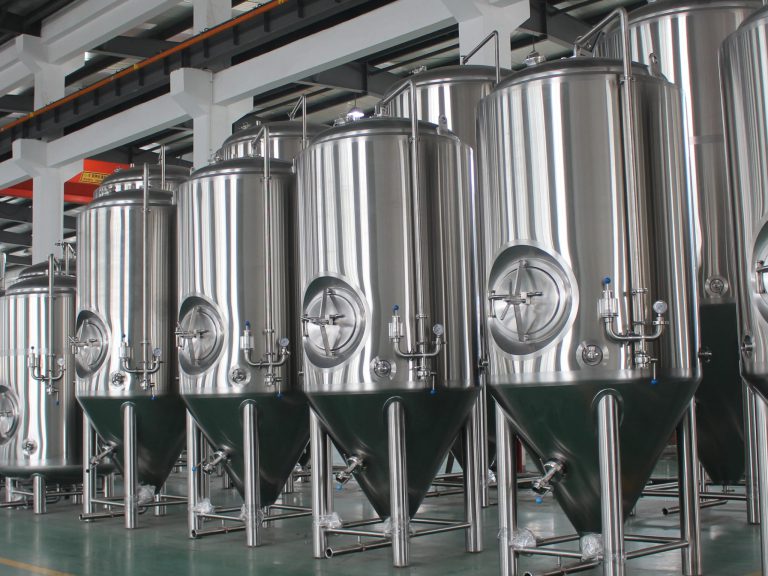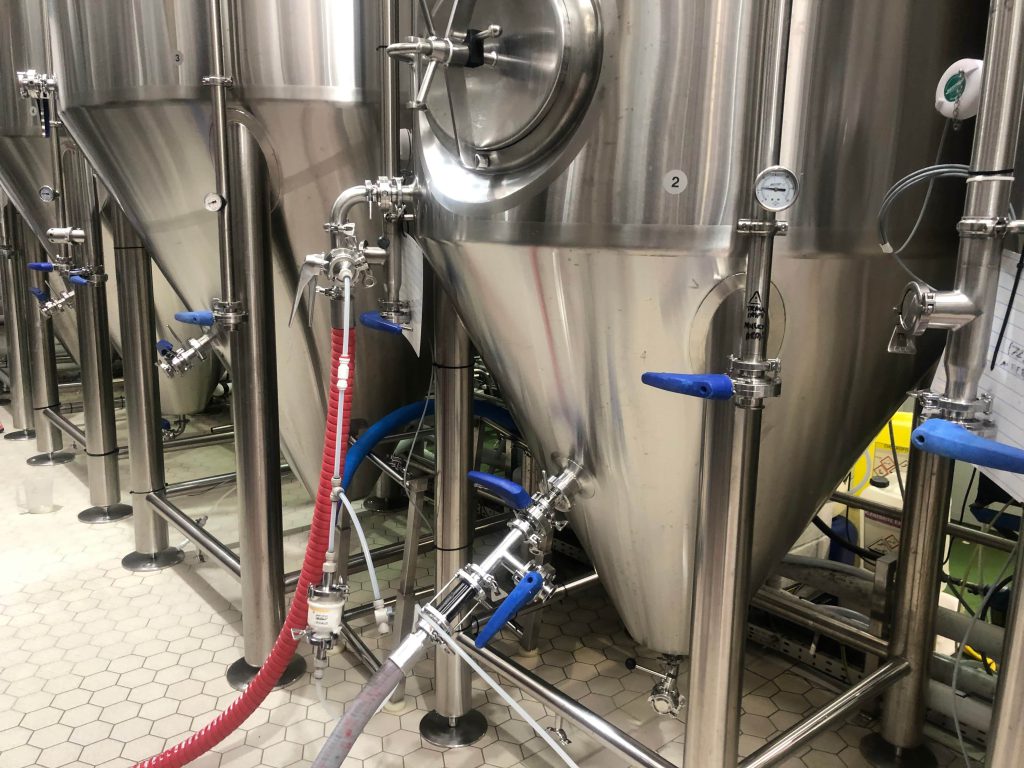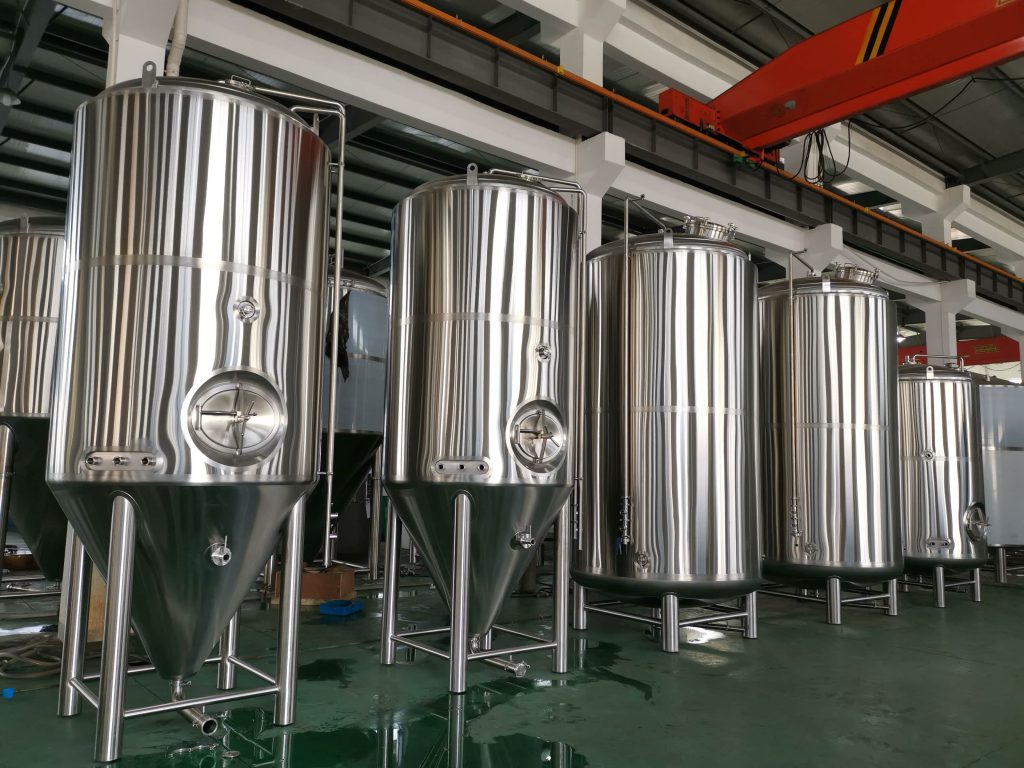導入

ビール醸造のダイナミックな世界では、醸造タンクの設計と機能性が醸造プロセスの品質と効率に極めて重要です。長年にわたり、技術の進歩と持続可能性への重点が相まって、ビール醸造タンクの設計に大きな革新がもたらされました。このブログでは、材料や構造から自動化や持続可能性の実践に至るまで、これらの革新について考察し、現代の醸造所の運営に及ぼす影響に焦点を当てます。
Evolution of ビール醸造タンク
The evolution of beer brewing tanks spans centuries, reflecting advancements in materials, construction techniques, and the understanding of brewing science. Initially, wooden barrels were the primary vessels for fermentation and aging. The transition to metal, particularly stainless steel, in the 20th century revolutionized brewing due to its durability, cleanliness, and ability to maintain consistent temperatures. Today, breweries increasingly opt for advanced polymers and composites alongside stainless steel, balancing performance with sustainability.
Key Components of Modern ビール醸造タンク
Modern beer brewing tanks consist of several crucial components, each designed to optimize the brewing process. Fermentation tanks, often cylindroconical in shape, allow for efficient yeast propagation and settling. Brite tanks, used for conditioning and carbonation, ensure beer clarity and consistency before packaging. Cooling systems, typically using glycol, maintain precise fermentation temperatures critical for flavor development. Advanced control systems monitor and regulate these processes, ensuring optimal conditions throughout.
Advanced Materials in Brewing Tank Construction
The shift from traditional materials like wood and concrete to stainless steel and advanced polymers has transformed beer brewing tanks design. Stainless steel remains popular for its durability, ease of cleaning, and resistance to corrosion. Advanced polymers offer benefits such as lightweight construction, thermal insulation properties, and resistance to chemical reactions, making them suitable for specific brewing processes and environmental conditions.
持続可能性 beer Brewing Tanks デザイン
Sustainability has become a cornerstone of modern beer brewing tanks design. Breweries are increasingly adopting practices that reduce energy consumption, water usage, and waste production. Innovations include heat recovery systems, which capture and reuse energy from brewing processes, and water-saving technologies like closed-loop systems for cleaning and cooling. Additionally, the use of recyclable materials in tank construction aligns with broader environmental goals, reducing the brewery’s carbon footprint.
Innovations in Heating and Cooling Systems
Efficient temperature control is critical throughout the brewing process to achieve consistent product quality. Advanced glycol-jacketed tanks provide precise temperature regulation during fermentation and conditioning stages, optimizing yeast activity and flavor development. Automated temperature monitoring systems allow brewers to maintain tight control over fermentation profiles, ensuring reproducible results batch after batch.
自動化および制御システム
Automation has revolutionized brewery operations, enhancing efficiency, consistency, and quality control. Automated cleaning-in-place (CIP) systems reduce labor and water usage while ensuring tanks are thoroughly cleaned between batches. Integrated process control systems monitor and adjust parameters such as temperature, pressure, and pH in real-time, minimizing human error and maximizing brewing efficiency.
Case Studies: Notable Brewery Installations
Examining specific breweries that have embraced innovative tank designs provides practical insights into their benefits and challenges. For example, a craft brewery may highlight how the adoption of advanced cooling systems has improved product shelf-life and consistency. Larger breweries might showcase the scalability of modular tank designs, which accommodate fluctuating production demands without compromising quality or efficiency.
の比較 醸造タンク 材料
| 材料 | 利点 | デメリット |
|---|---|---|
| ステンレス鋼 | Excellent durability and hygiene | High initial cost |
| 銅 | Superior heat conductivity | Prone to corrosion |
| ガラス | Non-reactive, allows visual inspection | 壊れやすい |
| Polyethylene | 軽量、安価 | Limited to certain types of tanks |
今後の動向 ビール醸造タンク

Looking ahead, several trends are poised to shape the future of brewing tank design. Artificial intelligence (AI) and machine learning technologies promise to optimize brewing processes further by analyzing data and predicting optimal brewing conditions. Modular tank designs will continue to gain popularity for their flexibility and scalability, allowing breweries to expand or reconfigure production lines efficiently. Additionally, the integration of Internet of Things (IoT) devices will enable real-time monitoring of tank conditions, facilitating proactive maintenance and enhancing operational efficiency.
結論
In conclusion, the evolution of ビール醸造タンク reflects broader trends in technology, sustainability, and consumer demand for high-quality craft beer. The innovations discussed in this blog are shaping the future of brewing, promising even greater efficiency, sustainability, and creativity in beer production. By embracing advanced materials, automation, and sustainable practices, breweries can continue to push the boundaries of brewing excellence while minimizing environmental impact.
よくある質問
Q: What are the benefits of stainless steel 戦車 over traditional materials?
A:Stainless steel tanks offer superior durability, cleanliness, and resistance to corrosion compared to traditional materials like wood or copper. They are also easier to maintain and sanitize, crucial for maintaining high brewing standards.
Q: How do cooling systems in ビール醸造タンク 仕事?
A:Cooling systems in brewing tanks, typically using glycol, circulate chilled liquid through a jacket surrounding the tank. This regulates the temperature inside the tank, crucial for controlling fermentation and conditioning processes.
Q: What role does automation play in modern brewing operations?
A:Automation improves efficiency and consistency in brewing operations by automating tasks such as temperature control, cleaning processes, and ingredient dosing. This reduces human error and ensures reproducible brewing results.
Q: How can breweries improve sustainability through タンク design?
A:Breweries can improve sustainability by adopting energy-efficient heating and cooling systems, implementing water-saving technologies, and using recyclable materials in tank construction. These practices minimize environmental impact and support sustainable brewing practices.

